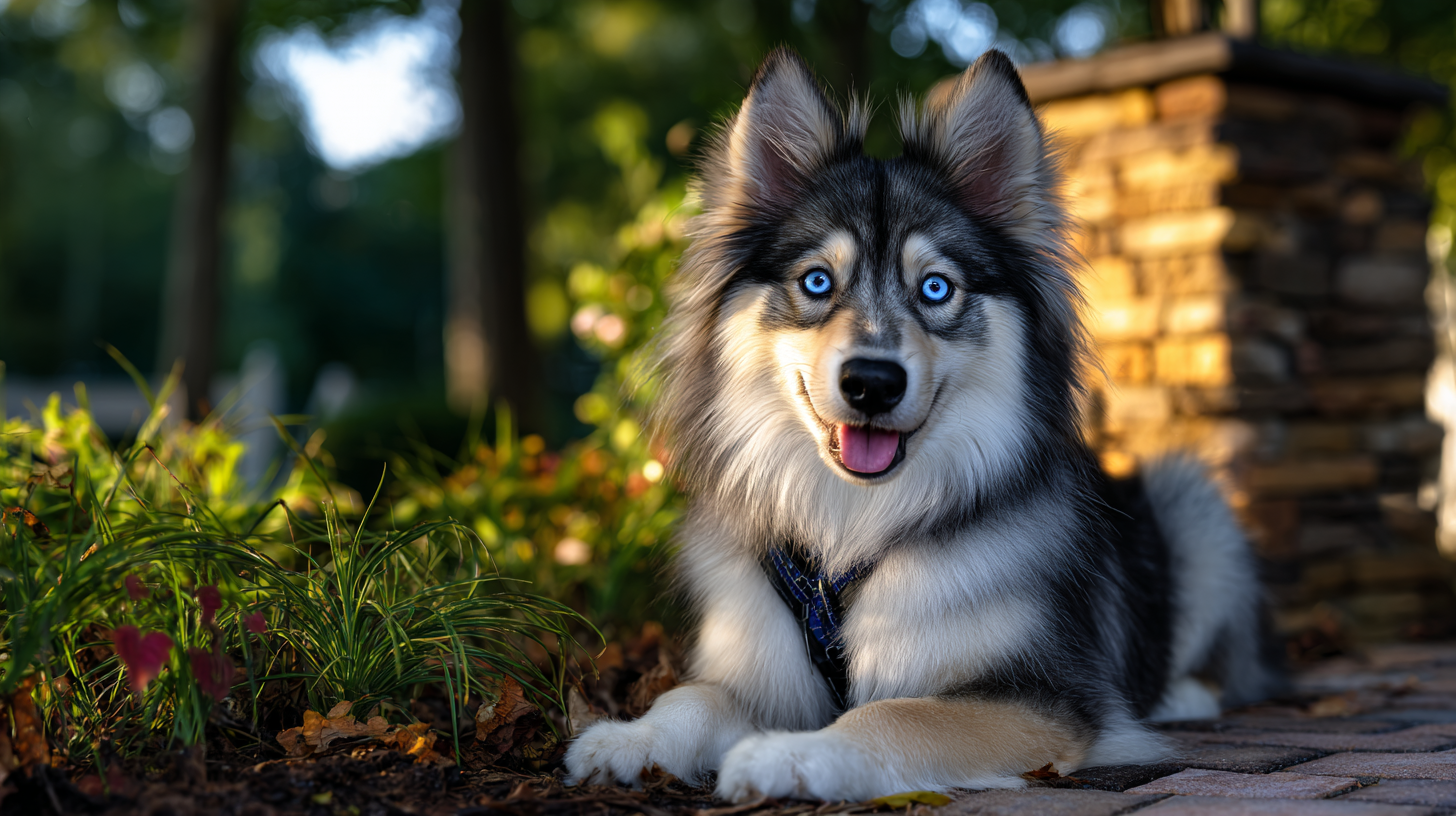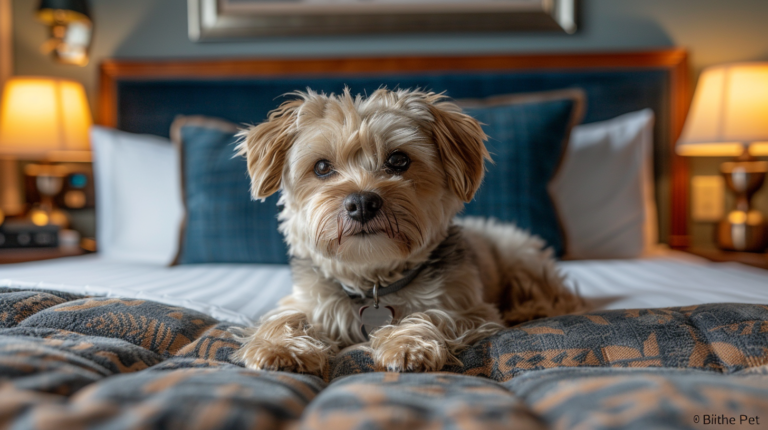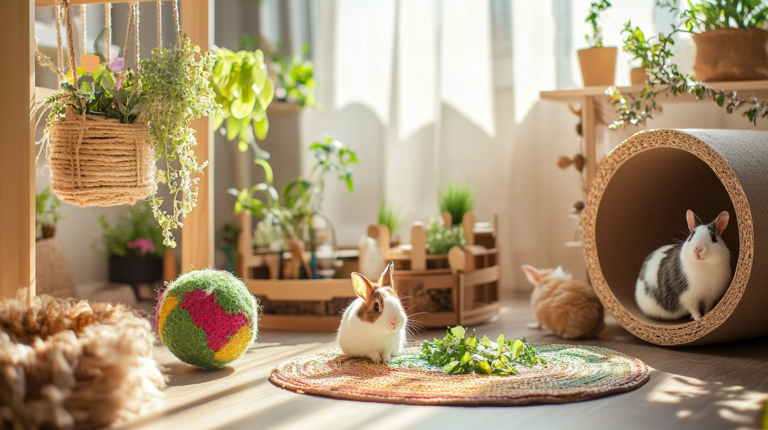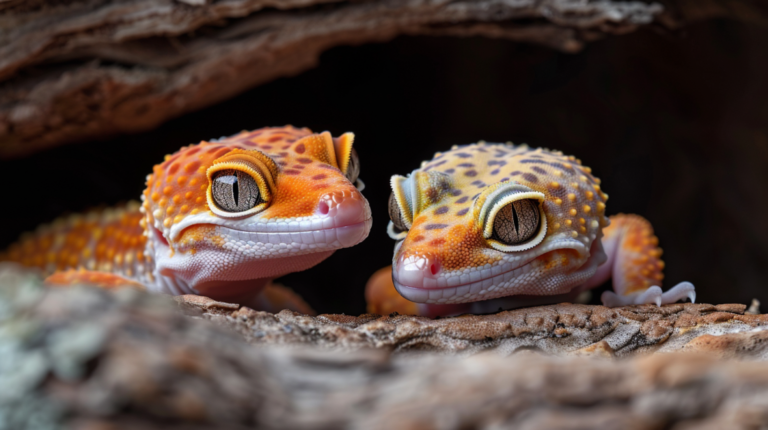Discover 10 incredible facts about the Pomsky dog breed! Learn about temperament, size, care tips, and what makes this Pomeranian-Husky mix so special.
Table of Contents
The Pomsky dog has captured hearts worldwide as one of the most adorable designer dog breeds to emerge in recent years. This enchanting crossbreed combines the striking appearance of a Siberian Husky with the compact size of a Pomeranian, creating a companion that’s both visually stunning and perfectly sized for modern living. Whether you’re a seasoned pet owner or considering your first furry family member, understanding the unique characteristics of the Pomsky dog can help you determine if this remarkable breed is the right fit for your lifestyle.
From their mesmerizing blue eyes to their fluffy double coats, Pomskies have become social media sensations and beloved family pets. However, beyond their undeniable cuteness lies a complex breed with specific care requirements, temperament traits, and health considerations that every potential owner should understand. This comprehensive guide will explore ten fascinating facts about Pomsky dogs that will give you valuable insights into what makes these remarkable canines so special.
1.The Pomsky Dog is a Relatively New Designer Breed
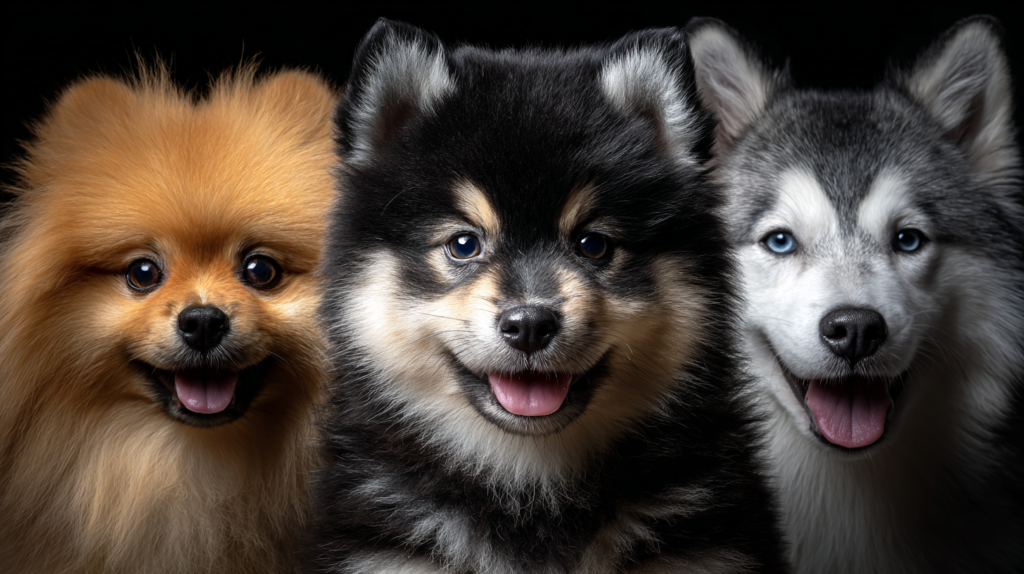
The Pomsky dog breed is remarkably young in the canine world, with its origins tracing back only to the early 2000s. Unlike traditional breeds that developed over centuries, the Pomsky was intentionally created through artificial insemination techniques, as the significant size difference between Pomeranians and Siberian Huskies makes natural breeding impossible.
The breed gained serious momentum around 2012 when the Pomsky Club of America was established to create breeding standards and ethical guidelines. This relatively recent development means that Pomsky genetics are still stabilizing, leading to significant variation in appearance, size, and temperament among individual dogs.
Key Timeline:
- 2000s: First documented Pomsky breeding attempts
- 2012: Pomsky Club of America founded
- 2015: Breed recognition by International Designer Canine Registry
- Present: Continuing development of breed standards
This newness presents both opportunities and challenges for potential owners. While you’re getting a unique and eye-catching companion, the breed’s characteristics are still being refined, meaning each Pomsky dog can be quite different from another.
2.Size Variations Can Be Dramatically Different
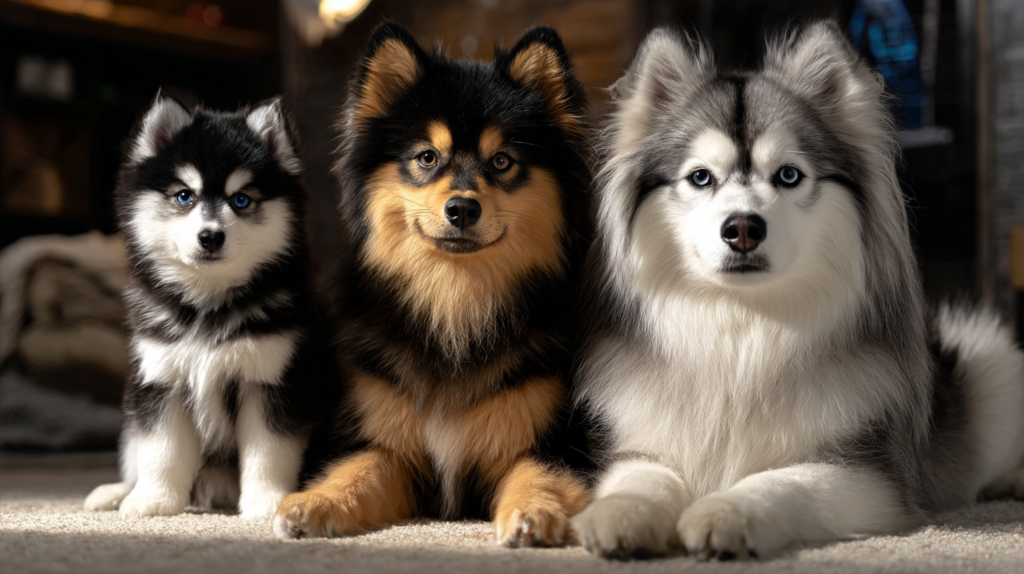
One of the most surprising facts about the Pomsky dog is the dramatic size variation within the breed. Unlike established breeds with predictable adult sizes, Pomskies can range anywhere from 10 to 30 pounds and stand between 10 to 15 inches tall at the shoulder.
Size Categories:
- Toy Pomsky: 5-10 pounds (rare, closer to Pomeranian size)
- Mini Pomsky: 10-18 pounds (most common)
- Standard Pomsky: 18-30 pounds (closer to small Husky size)
The size your Pomsky will reach depends heavily on which parent’s genes are more dominant. First-generation (F1) Pomskies tend to be more unpredictable in size, while subsequent generations (F2, F3) may show more consistency. This size variation means that potential owners should be prepared for their puppy to grow significantly larger or smaller than expected.
According to the American Pomsky Kennel Club, approximately 60% of Pomskies fall into the mini category, making them ideal apartment dogs while still maintaining the Husky’s striking appearance.
3.Their Coat Requires Significant Grooming Commitment
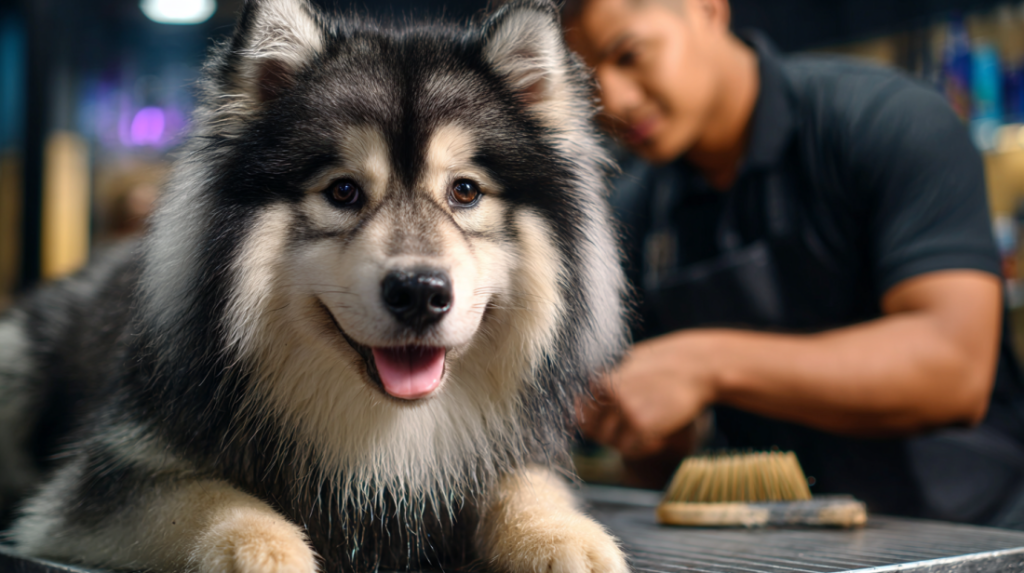
The Pomsky dog inherits a double coat from both parent breeds, creating a stunning but high-maintenance fur situation. This double coat consists of a soft, dense undercoat and a longer, coarser outer coat that provides weather protection.
Grooming Requirements:
| Grooming Task | Frequency | Time Required |
| Brushing | Daily | 15-20 minutes |
| Professional grooming | Every 6-8 weeks | 2-3 hours |
| Nail trimming | Bi-weekly | 10 minutes |
| Teeth brushing | 3-4 times per week | 5 minutes |
| Ear cleaning | Weekly | 5 minutes |
Seasonal Shedding: Pomskies experience two major shedding seasons annually, typically in spring and fall. During these periods, daily brushing becomes essential to manage the increased hair loss and prevent matting. Many owners invest in high-quality deshedding tools and professional grooming services during these peak shedding times.
The grooming commitment extends beyond aesthetics. Regular brushing prevents painful matting, reduces allergens in the home, and provides an opportunity to check for skin issues or parasites. Neglecting grooming can lead to skin problems and costly veterinary visits.
4.Pomsky Dogs Have Complex Temperament Traits
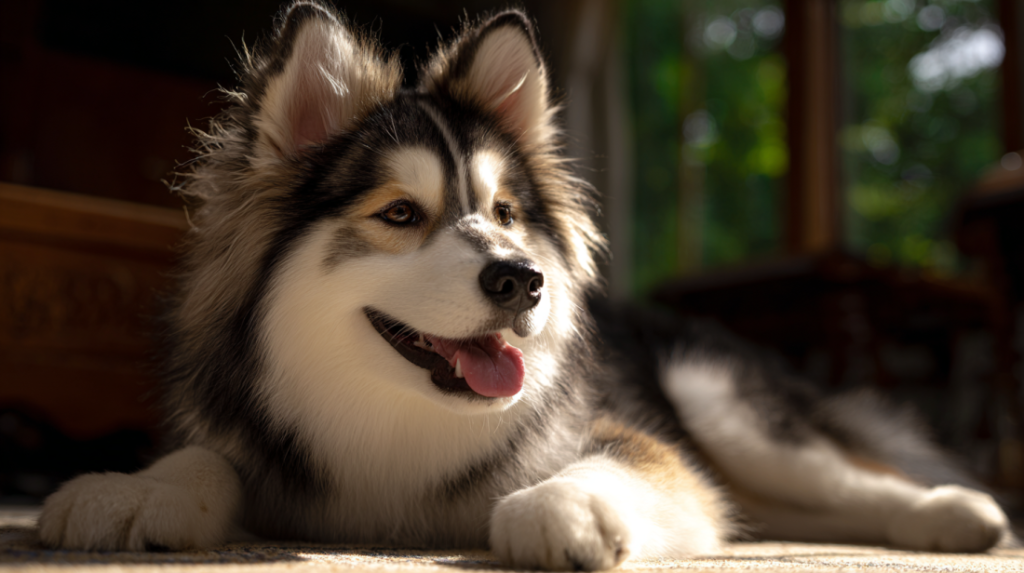
The Pomsky dog’s temperament combines traits from both parent breeds, creating a complex personality that can vary significantly between individuals. Understanding these temperament possibilities is crucial for potential owners to ensure a good match.
Inherited Traits from Pomeranians:
- High energy and alertness
- Strong attachment to owners
- Potential for small dog syndrome
- Vocal tendencies and barking
- Confidence despite small size
Inherited Traits from Siberian Huskies:
- High intelligence and problem-solving ability
- Independent thinking
- Strong prey drive
- Escape artist tendencies
- Social nature with other dogs
The combination of these traits means Pomsky dogs are typically intelligent, energetic, and devoted companions who can also be stubborn, vocal, and require consistent training. Early socialization is absolutely critical to ensure your Pomsky develops into a well-adjusted adult dog.
Training Considerations: Pomskies respond best to positive reinforcement training methods. Their intelligence means they learn quickly, but their independent streak inherited from Huskies can make them selective about following commands. Consistency and patience are key to successful training outcomes.
5.Exercise Needs Are Higher Than Their Size Suggests
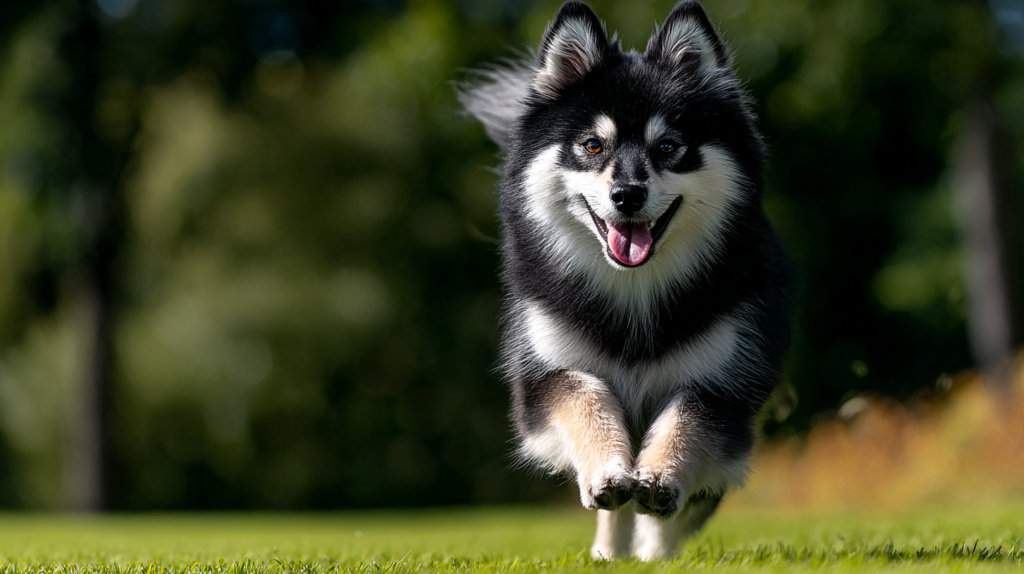
Despite their compact size, the Pomsky dog has substantial exercise requirements inherited from their Siberian Husky lineage. Many new owners underestimate these needs based on the dog’s size, leading to behavioral problems and destructive tendencies.
Daily Exercise Requirements:
- Minimum: 60-90 minutes of active exercise
- Walks: 2-3 walks totaling 3-5 miles
- Mental stimulation: 30-45 minutes of puzzle games or training
- Play time: Additional 30 minutes of interactive play
Exercise Ideas for Pomsky Owners:
- Hiking and nature walks
- Agility training courses
- Fetch and frisbee games
- Dog park socialization
- Swimming (if the dog enjoys water)
- Interactive puzzle toys for mental stimulation
Without adequate exercise, Pomsky dogs may develop destructive behaviors such as excessive barking, digging, chewing furniture, or attempting to escape. Their high intelligence combined with boredom can lead to creative and problematic behaviors that challenge even experienced dog owners.
Climate Considerations: Pomskies generally handle cold weather well due to their double coat but may struggle in extreme heat. Summer exercise should be scheduled during cooler morning or evening hours, with plenty of water available.
6.Health Concerns Span Both Parent Breeds
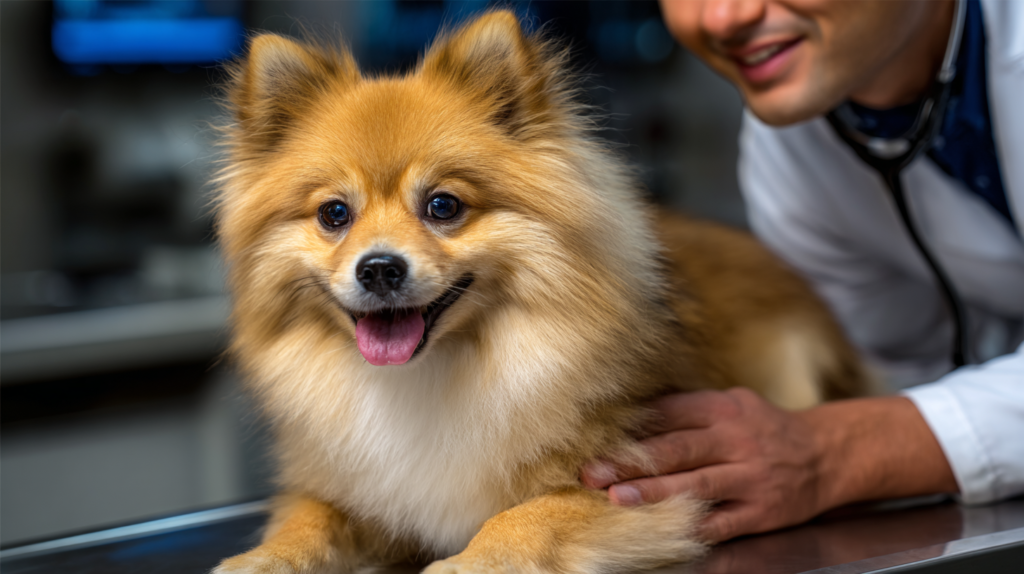
The Pomsky dog can inherit health issues from both Pomeranian and Siberian Husky lineages, making health screening and preventive care essential for responsible ownership.
Common Health Issues:
From Pomeranian Heritage:
- Luxating patella (kneecap dislocation)
- Tracheal collapse
- Dental problems due to small mouth size
- Hip dysplasia
- Eye problems including cataracts
From Siberian Husky Heritage:
- Hip and elbow dysplasia
- Progressive retinal atrophy
- Corneal dystrophy
- Hypothyroidism
- Seizure disorders
Health Screening Recommendations: Reputable Pomsky breeders should provide health clearances for both parent dogs, including hip and elbow evaluations, eye examinations, and genetic testing for breed-specific conditions. The Orthopedic Foundation for Animals (OFA) recommends specific health tests for both parent breeds.
Lifespan and Preventive Care: Pomsky dogs typically live 12-15 years with proper care. Regular veterinary checkups, maintaining a healthy weight, and providing appropriate exercise can help prevent or manage many health issues. Pet insurance is often recommended due to the potential for inherited conditions from both parent breeds.
7.Socialization Requirements Are Critical
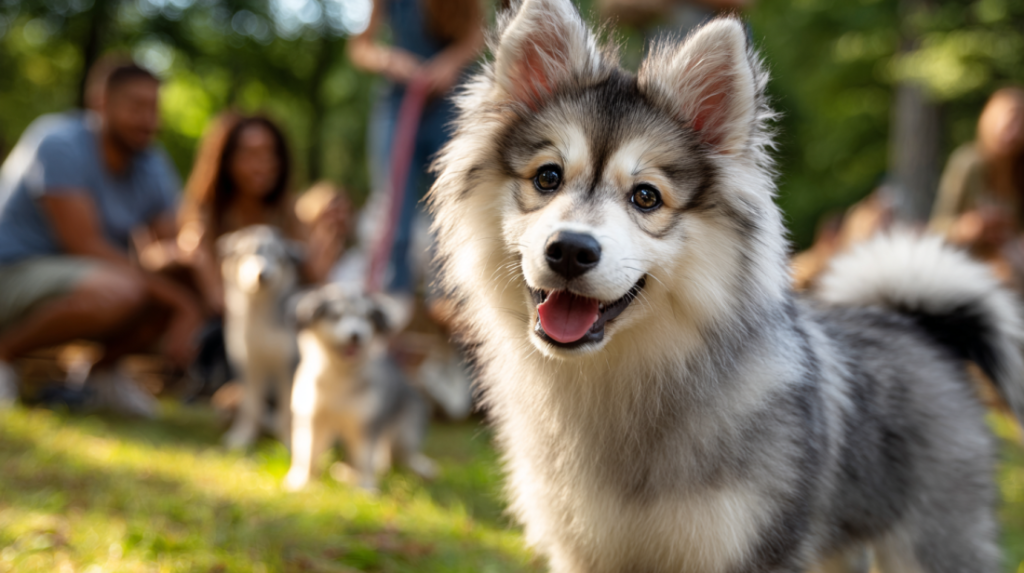
Proper socialization is absolutely crucial for Pomsky dogs due to their complex genetic heritage. The combination of Pomeranian boldness and Husky independence can lead to behavioral challenges without early and consistent social exposure.
Critical Socialization Period: The most important socialization window occurs between 3-14 weeks of age. During this time, puppies should be exposed to various people, animals, environments, sounds, and experiences in a positive, controlled manner.
Socialization Checklist:
- People: Children, adults, seniors, people wearing uniforms or hats
- Animals: Other dogs, cats, small animals (supervised)
- Environments: Urban settings, parks, pet stores, veterinary offices
- Sounds: Traffic, sirens, thunder, household appliances
- Surfaces: Grass, concrete, stairs, tile, carpet
- Experiences: Car rides, grooming, handling of paws and mouth
Ongoing Socialization: Socialization doesn’t end after puppyhood. Adult Pomsky dogs benefit from continued exposure to new experiences throughout their lives. Dog training classes, dog parks, and structured playdates help maintain social skills and prevent the development of fearfulness or aggression.
Challenges Without Proper Socialization: Poorly socialized Pomskies may develop fear-based aggression, excessive barking, separation anxiety, or become overly protective of their owners. These behaviors can be difficult to modify in adult dogs, making early socialization an investment in your dog’s future well-being.
8.They Make Excellent Apartment Dogs (With Conditions)
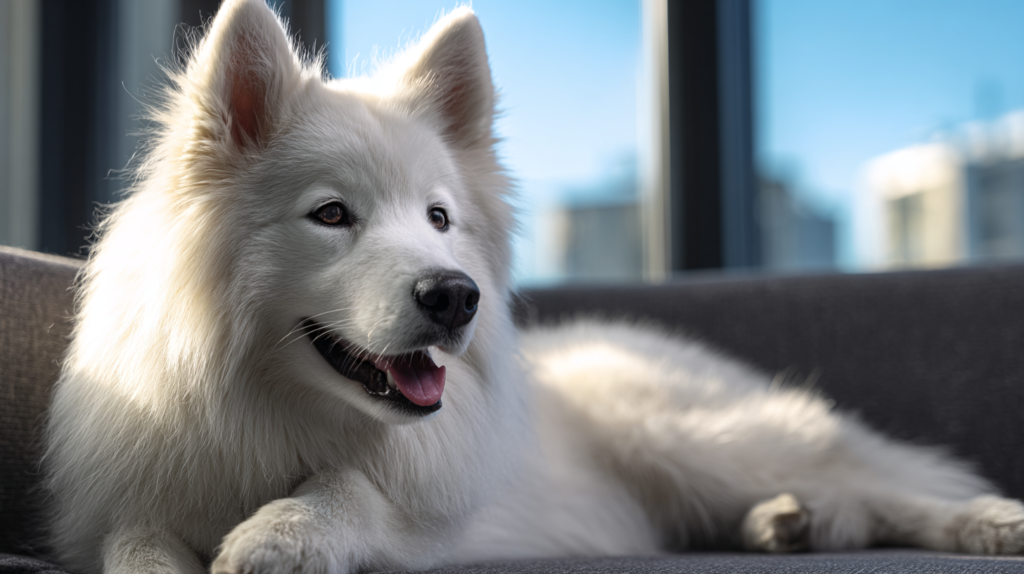
Contrary to what their Husky heritage might suggest, many Pomsky dogs adapt well to apartment living when their needs are properly met. Their smaller size makes them more suitable for compact living spaces than their larger parent breed.
Apartment Living Success Factors:
- Adequate daily exercise: Meeting their high energy requirements through walks and play
- Mental stimulation: Puzzle toys, training sessions, and interactive games
- Noise management: Training to minimize excessive barking
- Routine establishment: Consistent schedule for meals, exercise, and potty breaks
Apartment-Friendly Qualities:
- Size appropriate for smaller spaces
- Adaptable to indoor living
- Strong bond with owners reduces need for large territories
- Can be trained to use indoor potty solutions if necessary
Potential Challenges:
- High energy levels requiring creative exercise solutions
- Vocal tendencies that may disturb neighbors
- Escape artist abilities requiring secure balconies or outdoor areas
- Need for regular outdoor exploration and stimulation
Tips for Apartment Success: Successful apartment living with a Pomsky requires commitment to meeting their exercise needs through daily walks, trips to dog parks, and creative indoor activities. Many apartment-dwelling Pomsky owners establish routines that include morning exercise sessions, lunchtime walks, and evening play time.
9.Training Challenges Require Experienced Handling
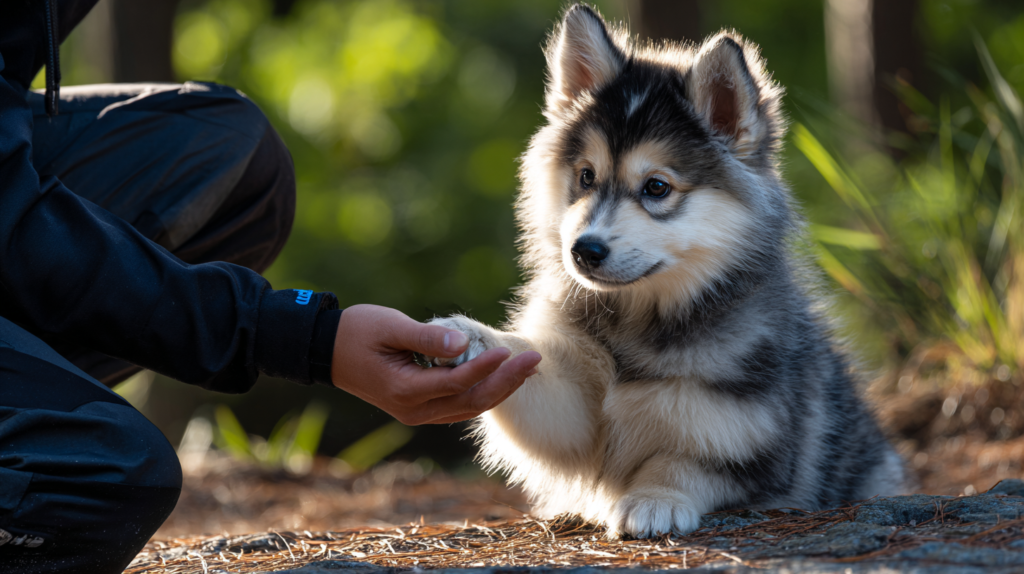
The Pomsky dog presents unique training challenges that combine the stubbornness of both parent breeds with high intelligence and independent thinking. Successfully training a Pomsky requires understanding these specific challenges and adapting training methods accordingly.
Training Challenges:
- Selective hearing: May ignore commands when distracted or uninterested
- High intelligence: Can become bored with repetitive training
- Independent thinking: Prefers to make their own decisions
- Sensitivity: May shut down with harsh training methods
- Attention span: Can be easily distracted by interesting sights or sounds
Effective Training Strategies:
Positive Reinforcement Approach:
- Use high-value treats and rewards
- Keep training sessions short (5-10 minutes)
- Make training fun and engaging
- Celebrate small victories
- Maintain consistency across all family members
Mental Stimulation Integration:
- Incorporate puzzle-solving into training
- Use food-dispensing toys for basic commands
- Practice commands in various environments
- Challenge them with new tricks and skills
- Rotate training activities to maintain interest
Professional Training Recommendations: Many Pomsky owners benefit from professional training classes, particularly puppy kindergarten and basic obedience courses. The socialization aspect of group classes is particularly valuable for this breed.
10.Breeding and Availability Factors
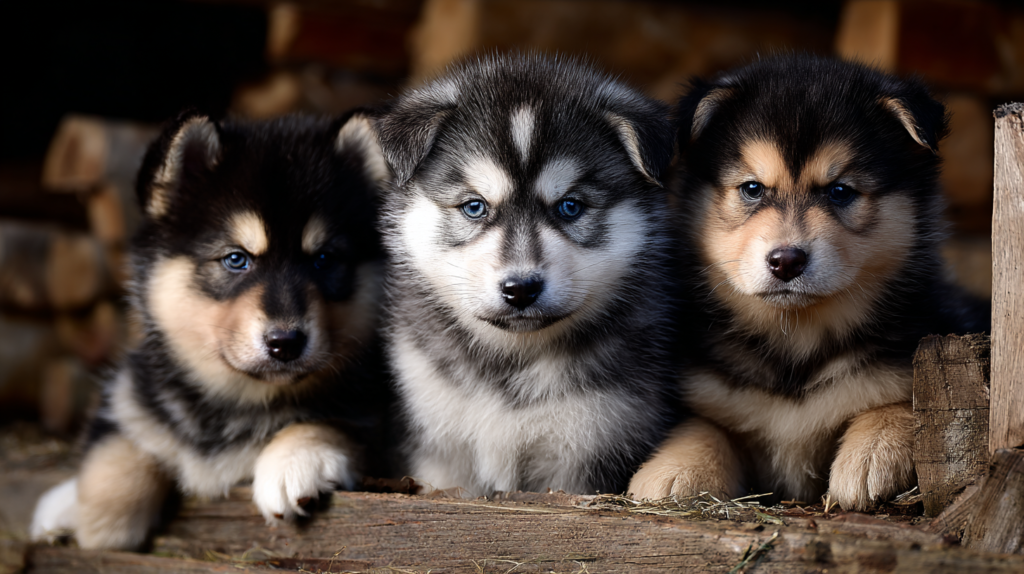
The Pomsky dog breeding process is complex and expensive, directly impacting availability and cost for potential owners. Understanding these factors helps set realistic expectations for acquiring a Pomsky.
Breeding Complexity:
- Artificial insemination required: Size difference between parents makes natural breeding impossible
- Limited breeding stock: Relatively few established breeding programs
- Genetic unpredictability: Significant variation in offspring characteristics
- High breeding costs: Reflected in puppy prices
Generation Differences:
- F1 Pomskies: First generation (50% Pomeranian, 50% Husky) – most unpredictable
- F2 Pomskies: Second generation (F1 × F1) – slightly more predictable
- F1B Pomskies: Backcross (F1 × Pomeranian or Husky) – traits favor backcrossed parent
Cost Considerations:
- Initial purchase: $2,000-$5,000 from reputable breeders
- Ongoing costs: $1,500-$3,000 annually for food, veterinary care, grooming
- Potential health costs: $500-$3,000 for inherited condition treatment
Finding Reputable Breeders: Due to the popularity and high cost of Pomskies, puppy mills and irresponsible breeders have entered the market. Reputable breeders provide health clearances, allow visits to their facilities, and offer ongoing support to puppy buyers.
Red Flags to Avoid:
- Breeders who always have puppies available
- Unwillingness to show breeding facilities
- No health clearances for parent dogs
- Prices significantly below market average
- Selling puppies before 8 weeks of age
Size and Appearance Variations
The Pomsky dog exhibits remarkable diversity in appearance, even within the same litter. This variation stems from the genetic lottery that occurs when crossing two physically distinct breeds.
Coat Variations:
- Colors: Black and white, gray and white, brown and white, sable, pure white (rare)
- Patterns: Husky-like markings, solid colors, parti-color combinations
- Texture: Ranges from Pomeranian-soft to Husky-coarse
- Length: Short to medium length, always double-coated
Facial Features:
- Eyes: Blue (most desired), brown, amber, or heterochromia (two different colors)
- Ears: Erect like both parents, but size varies
- Muzzle: Length varies from Pomeranian-short to more Husky-like proportions
- Expression: Alert and intelligent, combining both breeds’ characteristics
Predicting Adult Appearance: While impossible to guarantee, certain indicators can suggest adult characteristics. Paw size, ear set, and early coat development provide clues about final size and appearance. However, Pomsky dogs can continue changing in appearance up to 18 months of age.
Feeding and Nutrition Requirements
Proper nutrition is crucial for Pomsky dogs due to their high energy levels and potential for weight gain, particularly if they inherit the Pomeranian tendency toward obesity.
Nutritional Needs by Life Stage:
Puppy Stage (8 weeks – 12 months):
- High-quality puppy food with 25-30% protein
- Small kibble size appropriate for their mouth
- 3-4 meals per day until 6 months
- Calcium and phosphorus balance for proper bone development
Adult Stage (1-7 years):
- Premium dog food with 20-25% protein
- 2 meals per day to prevent bloat
- Portion control to prevent weight gain
- Active formula for high-energy dogs
Senior Stage (7+ years):
- Senior formula with reduced calories
- Joint support supplements
- Easily digestible proteins
- Monitor for age-related health issues
Special Dietary Considerations:
- Food allergies: Some Pomskies inherit sensitivities from parent breeds
- Dental health: Smaller mouth size may require dental-specific kibble
- Weight management: Important due to small size and joint stress concerns
Living Environment and Space Requirements
While Pomsky dogs can adapt to various living situations, certain environmental factors contribute to their success and happiness.
Ideal Living Conditions:
- Fenced yard: Secure area for safe off-leash exercise
- Climate considerations: Handle cold better than extreme heat
- Indoor/outdoor access: Best of both worlds for exercise and bonding
- Quiet neighborhoods: Reduce territorial barking triggers
Urban Living Adaptations:
- Balcony security: Essential due to escape artist tendencies
- Noise considerations: Training to minimize apartment-disturbing barking
- Exercise creativity: Dog parks, hiking trails, indoor play areas
- Socialization opportunities: Urban environments provide excellent exposure
Rural Living Benefits:
- Space for exercise: Large areas for running and exploration
- Natural stimulation: Wildlife, scents, and varied terrain
- Reduced noise restrictions: More tolerance for natural vocalizations
- Training opportunities: Space for recall and advanced training
FAQ Section
What is the average lifespan of a Pomsky dog?
Pomsky dogs typically live 12-15 years, which is similar to both parent breeds. Their lifespan can be influenced by genetics, diet, exercise, and preventive veterinary care. Maintaining a healthy weight and providing regular exercise can help maximize their longevity.
Are Pomsky dogs good with children?
Pomsky dogs can be excellent with children when properly socialized from a young age. However, their small size makes them more suitable for families with older children who understand how to interact gently with dogs. Early socialization and training are crucial for developing appropriate behavior around children.
How much does a Pomsky dog cost?
The initial cost of a Pomsky dog ranges from $2,000-$5,000 from reputable breeders. Ongoing annual costs including food, veterinary care, grooming, and supplies typically range from $1,500-$3,000. Potential health issues inherited from parent breeds may result in additional veterinary expenses.
Do Pomsky dogs shed a lot?
Yes, Pomsky dogs are heavy shedders due to their double coat inherited from both parent breeds. They shed year-round with two major shedding seasons in spring and fall. Daily brushing is required to manage shedding and prevent matting, making them unsuitable for people with severe allergies.
Can Pomsky dogs be left alone during the day?
Pomsky dogs can develop separation anxiety and are not ideal for owners who work long hours. They prefer companionship and can become destructive when left alone for extended periods. If you must leave them alone, gradual training and mental stimulation toys can help, but 8+ hours alone regularly is not recommended.
Are Pomsky dogs easy to train?
Pomsky dogs are intelligent but can be challenging to train due to their independent nature inherited from both parent breeds. They respond best to positive reinforcement training methods and require patience and consistency. Early training and socialization are essential for success.
For more expert pet care tips and product recommendations, visit BlithePet.com — your trusted source for pet wellness.
Conclusion
The Pomsky dog represents a fascinating blend of two beloved breeds, creating a companion that’s both visually striking and wonderfully complex. From their unpredictable size variations to their high-maintenance grooming needs, these designer dogs offer unique rewards and challenges for dedicated owners.
Understanding these ten essential facts about Pomsky dogs helps potential owners make informed decisions about whether this remarkable breed fits their lifestyle. Their intelligence, energy levels, and social needs require commitment, but for the right owner, a Pomsky can provide years of loyal companionship and endless entertainment.
The key to success with a Pomsky lies in understanding their dual heritage, meeting their substantial exercise and grooming needs, and providing consistent training and socialization. While they may not be the right choice for first-time dog owners or those seeking a low-maintenance pet, experienced owners who appreciate their unique characteristics will find Pomskies to be rewarding and devoted companions.
Have a similar experience with your pet? Share it in the comments below!

